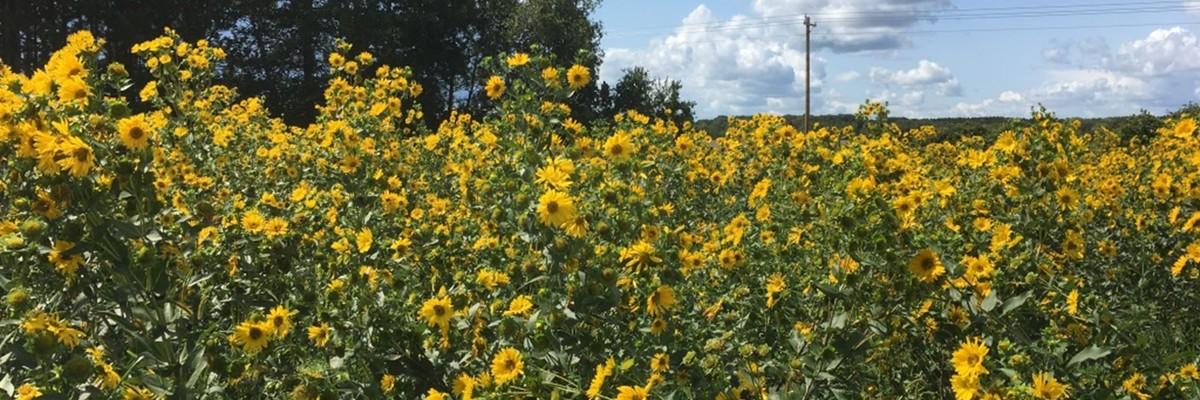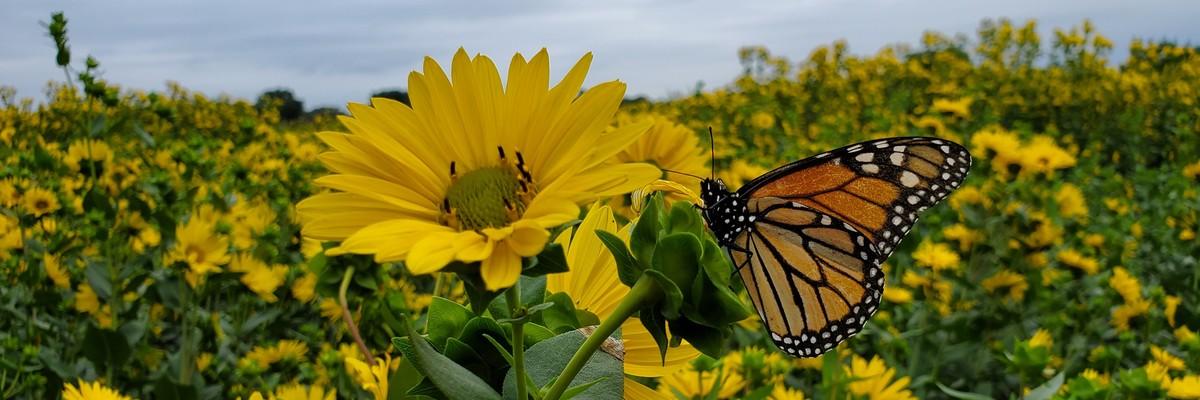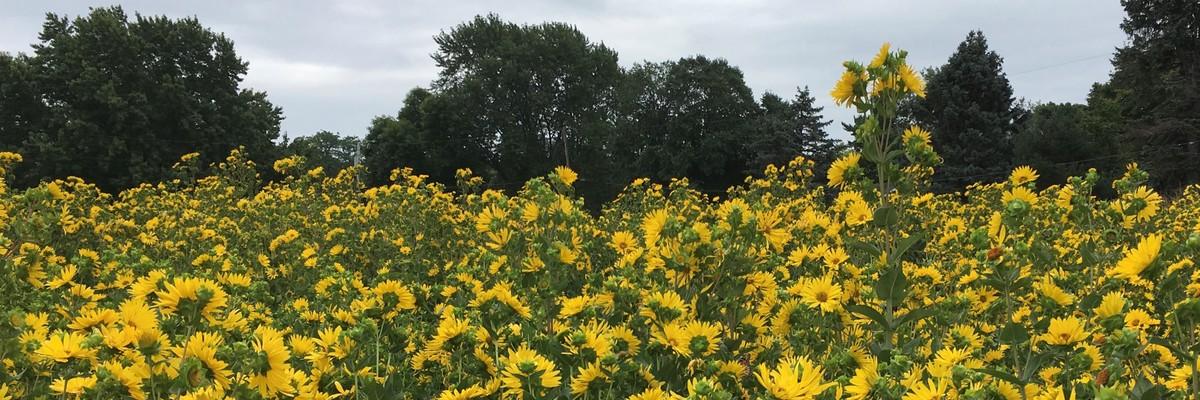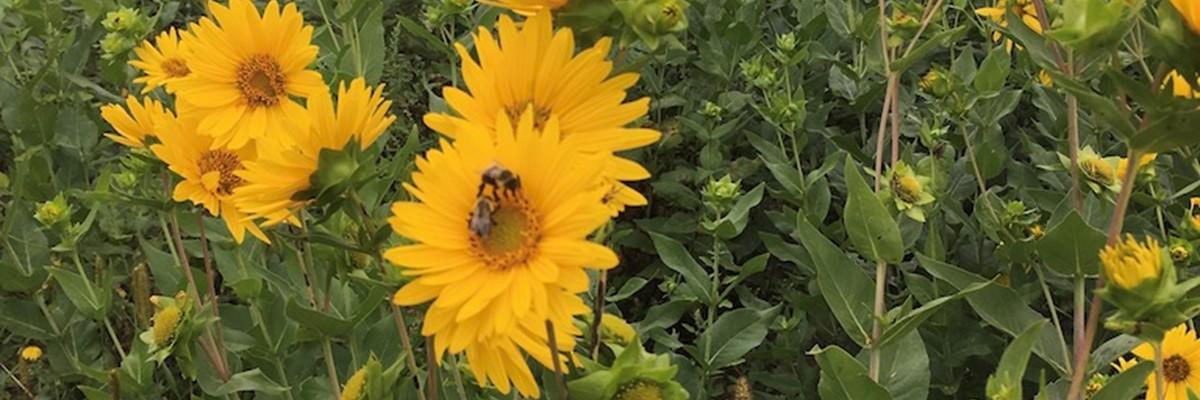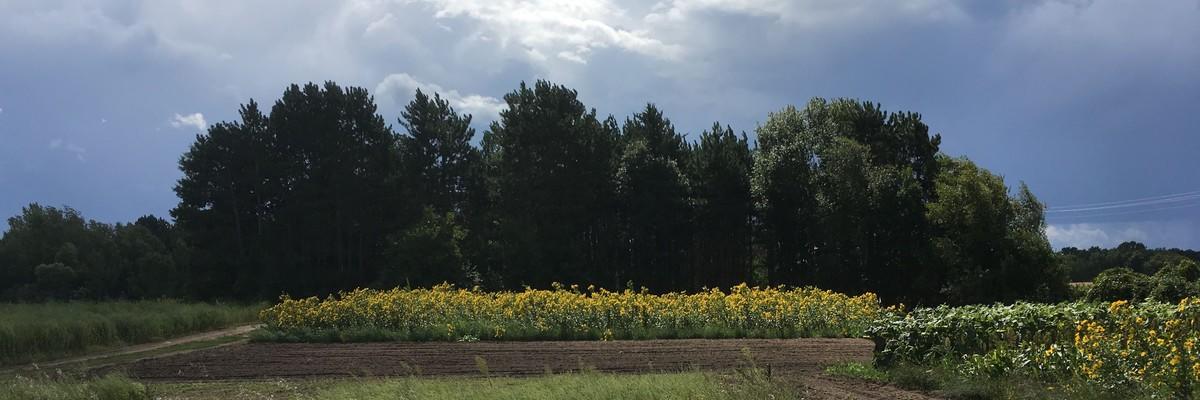On this page:
What is Silflower???
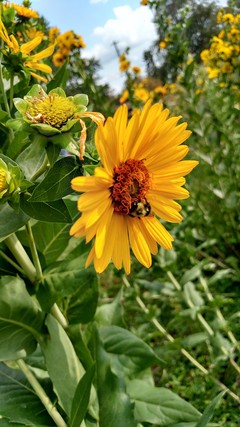
Wild germplasm
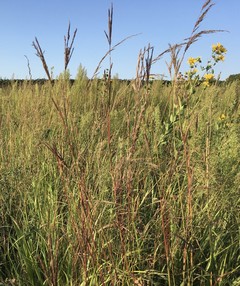
As a part of our breeding efforts, we are working with The Land Institute and other groups to help collect and characterize wild silflower plants from across the country, and to integrate these collections into our breeding program. These collections will help us to search for new sources of disease resistance and to adapt silflower to different climates. Additionally, this diversity may help to support the long-term health of silflower as a crop. We currently have silflower collections from nine states, and are always looking for more. If you would be interested in helping this effort, send us an email!
Domestication
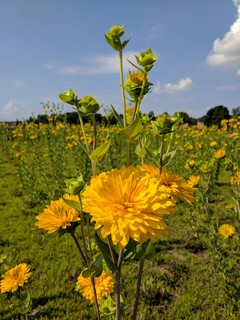
Domestication of Silflower began 20 years ago at The Land Institute in Kansas, where plants were selected for their agronomic traits such as yield. To avoid the loss of genetic diversity associated with domestication, beneficial genes from Silfower from across its native range should be incorporated in the breeding program. We are working on creating a multiparent population based on seedlings obtained from David Van Tassel of The Land Institute; the goal of this project is to obtain a population with varied genetics and phenotypes to avoid genetic bottlenecking which may serve as a mapping population for genomic work and future breeding.
Breeding
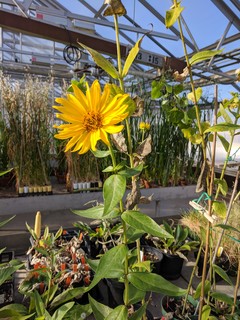
Our goal is to develop silflower as a perennial oilseed crop for the Upper Midwest, and to support silflower breeding efforts across the country. In Minnesota, we are working to select for silflower plants which are easier to grow and harvest, have larger seeds, and yield well in our climate. Our group has also led an effort to evaluate silflower varieties across several states, to determine how environments as diverse as northwest Minnesota and southeast Texas impact silflower growth and performance. We are also testing methods to grow and develop silflower more quickly, allowing us to speed up our breeding progress.
Agronomics
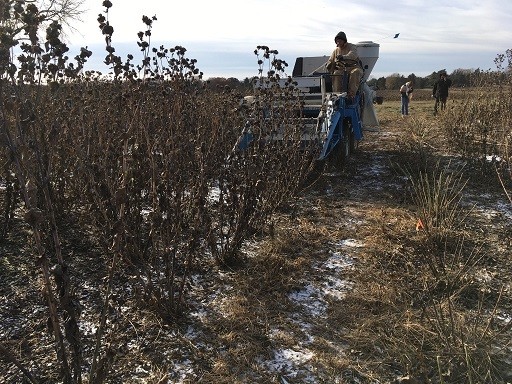
With our current agronomic work, we are hoping to better understand silflower yields and best practices for planting and management. Previously, the U of M Silflower group established a baseline for optimal fertilizer requirements and plant spacing. With that information we can better assess yields of the preliminary varieties that have come out of our breeding program. We are also investigating different management practices that could reduce weed competition and make silflower easier to harvest by hand or combine.
In Minnesota, we have observed projected yields as high as 1319 kg/ha and oil yields of 310 kg/ha in the first year after establishment.
Collaborators
The Land Institute - Perrenial Oilseeds
Sheaffer Lab, Dept. of Agronomy and Plant Genetics, University of Minnesota
Brandvain Lab, University of Minnesota, College of Biological Sciences
Picasso Lab, University of Wisconsin- Madison
Red River Valley Agricultural Research Center, USDA-ARS Fargo, North Dakota
